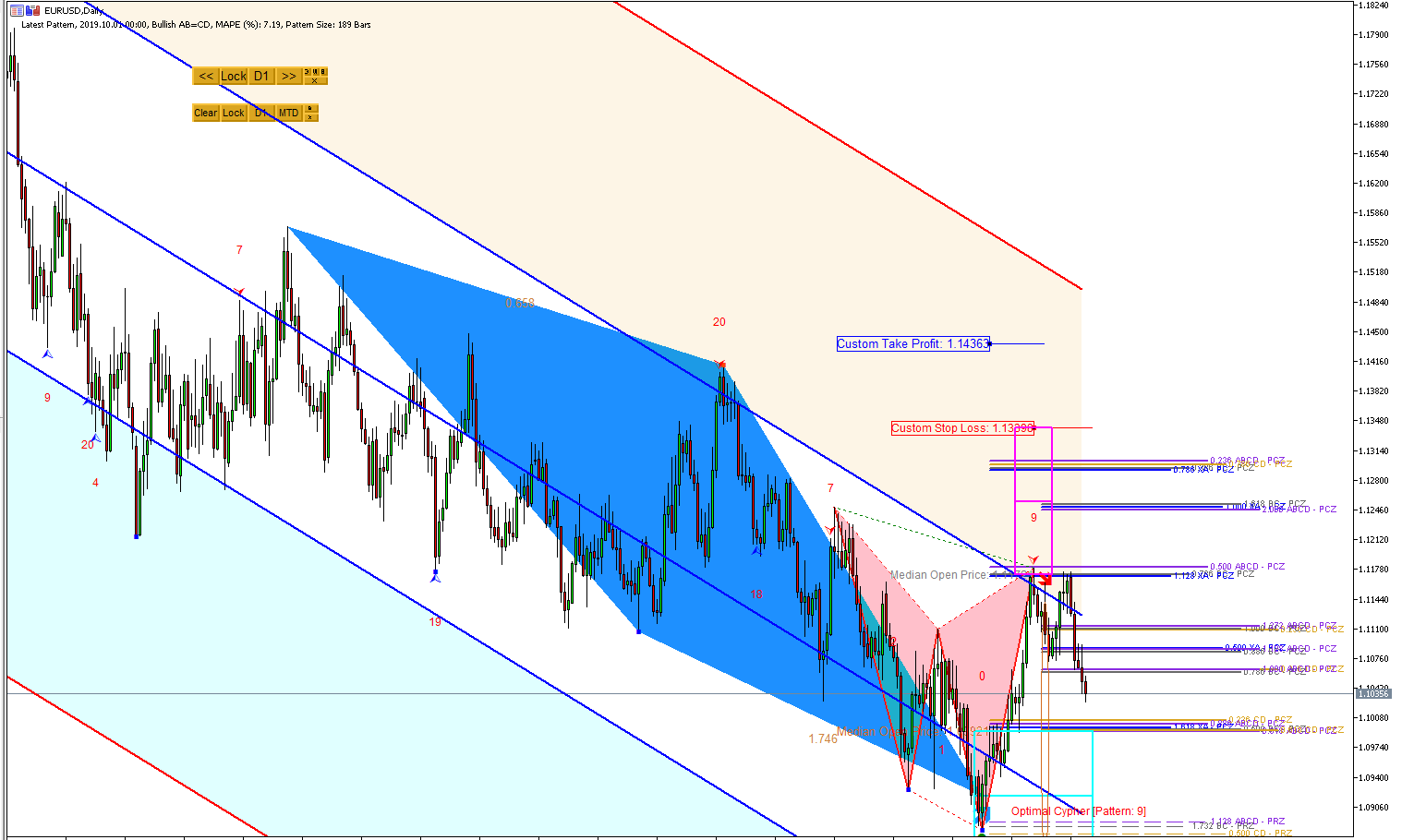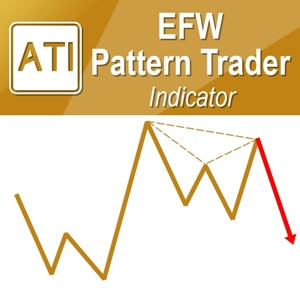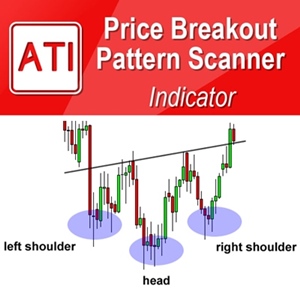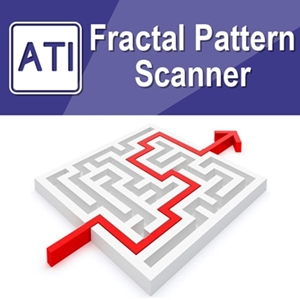Profitable Chart Patterns in Forex and Stock Market on Google Play Book and Google Book
The “profitable chart pattern” refers to specific formations or configurations observed on price charts that have historically demonstrated a higher probability of resulting in profitable trading opportunities. These patterns are identified through technical analysis, which involves studying historical price movements and patterns to forecast future price direction.
A profitable chart pattern typically exhibits certain characteristics:
- Reliability: Profitable chart patterns have a track record of accurately predicting future price movements more often than not. Traders rely on the consistency of these patterns across different time frames and market conditions.
- Clear Signal: A profitable chart pattern provides a clear indication of when to enter or exit a trade. It usually has defined criteria for identification, making it easy for traders to recognize and act upon.
- Risk-to-Reward Ratio: Successful chart patterns often offer a favorable risk-to-reward ratio, meaning the potential profit from a winning trade outweighs the potential loss from a losing trade. This helps traders manage risk effectively.
- Confirmation: Many profitable chart patterns are confirmed by other technical indicators or market conditions, adding to their reliability. Confirmation may come from volume analysis, momentum indicators, or trend analysis.
- Applicability Across Assets: Some chart patterns are applicable across different financial instruments, such as stocks, forex, commodities, and cryptocurrencies. This universality increases their appeal to a wide range of traders.
Harmonic patterns and Elliott Wave patterns are two profitable chart patterns used by traders to identify potential opportunities in the financial markets. Let’s delve into each of them:
Harmonic Patterns:
- ABCD Pattern: This is one of the simplest harmonic patterns and consists of two equal price legs (AB and CD) connected by two smaller price legs (BC). Traders look for this pattern to potentially forecast price reversals or continuation.
- Gartley Pattern: Named after H.M. Gartley, this pattern is similar to the ABCD pattern but includes additional Fibonacci ratios. It’s identified by specific Fibonacci retracement and extension levels, often forming a “M” or “W” shape on the chart.
- Butterfly Pattern: The butterfly pattern is another harmonic pattern characterized by specific Fibonacci levels. It resembles a butterfly and often signals potential reversals. Traders look for the completion of the pattern to enter trades.
- Bat Pattern: The bat pattern is similar to the butterfly pattern but has different Fibonacci ratios. It’s also used to identify potential reversal zones in the market.
- Cypher Pattern: This pattern is characterized by a specific retracement of the XA leg and a specific projection of the BC leg. Traders use the cypher pattern to anticipate potential turning points in the market.
Elliott Wave Patterns:
- Impulse Waves: In Elliott Wave theory, impulse waves are five-wave patterns that move in the direction of the larger trend. These waves are labeled 1, 2, 3, 4, and 5, with waves 1, 3, and 5 moving in the direction of the trend, and waves 2 and 4 representing corrective moves.
- Corrective Waves: Corrective waves are countertrend moves that occur against the larger trend. They are labeled A, B, and C and often form complex patterns such as zigzags, flats, and triangles.
- Fibonacci Relationships: Elliott Wave theory also emphasizes the importance of Fibonacci relationships between wave lengths and retracements. Traders use Fibonacci ratios to anticipate potential reversal or continuation zones within Elliott Wave patterns.
- Wave Extensions: Sometimes, waves within Elliott Wave patterns extend beyond their typical lengths. These extensions often provide valuable information about the strength and momentum of the underlying trend.
Both harmonic patterns and Elliott Wave patterns require a good understanding of technical analysis and practice to effectively apply in trading. Traders often use them in combination with other technical indicators and risk management strategies to make informed trading decisions.
The most reliable and profitable chart patterns used by Forex and Stock trader include Support and Resistance, Fibonacci Analsyis, Harmonic Pattern, Elliott Wave pattern, Japanese Candlestick Pattern, Chart Patterns like Rising Wedge, Falling Wedge and Symmetrical Triangle. Surprisingly, the basic trading principle behind all these profitable chart pattern are tied under the Peak Trough Analysis, also known as the technical term “Fractal Wave”. Some trader might practice each chart pattern only. However, it is much more advantegeous to learn the basic principle behind all these profitable chart patterns and master them for your Forex and Stock trading. We briefly share one article introducing the basic principle of Trend and Turning Point, which in turn important to understanding the Profitable Chart Patterns like Support and Resistance, Fibonacci Analsyis, Harmonic Pattern, Elliott Wave pattern, Japanese Candlestick Pattern, Chart Patterns like Rising Wedge, Falling Wedge and Symmetrical Triangle.
If you want to become profitable trader, the first thing you need to understand is turning point and trend in the financial market. If you read many trading articles and books, you will find the diverse opinion over turning point and trend. Many people view turning point and trend as two separate subjects. However, it might be better to understand turning point and trend as one whole subject. Let us try to understand the trend. To do so, let us take human as an analogical example. We are born, we grow up, we become mature, and then we die. During this process, we can observe that there are four main stages. These four stages are universal across many creatures and objects observable in the earth.
Birth – Growth – Maturity – Death
Trend also goes through these four stages. Let us take an example in the financial market. For example, if we hear that Apple Inc. has some temporary problem in their smartphone supply line, this could stir up the stock price of Samsung Electronics because the demand for Samsung’s smart phone will be increased. Once this news is spread on the financial market, the upward trend will be born for Samsung’s stock price. At the beginning, this news could be known by few people. Later, more and more people could hear this news. Hence, Samsung’s stock price can build up upward momentum. However, this momentum will not last forever. Once people start to recognize that price rallied too high and some people start taking the profit by selling the stocks, the upward momentum can slow down. Especially, if we hear that Apple recovered the temporary problem in their smartphone supply line, the trend could die completely. As shown in this example, Birth, Growth, Maturity, and Death are the life cycle of trend.
Now let us revisit the definition of turning point and trend. Turning point is the beginning of new trend after the death of an old trend. Hence, turning point strategy refers to the strategy that tries to pick up this new trend as early as possible. This sometimes involves picking up the turning point at the birth stage of the trend. In financial trading, trend strategy typically refers to the strategy that tries to pick up the trend during the growth stage. Hence, most of trend strategy we know is in fact momentum strategy. When the growth of trend is strong, many technical indicators are designed to react on this strong growth.
Therefore, most of trend strategy provides you entry at the growth stage not at the birth stage. For example, if you trade on the buy signal when 20 moving average line crosses over the 50 moving average line, you do need strong upwards movement to lift the 20 moving average line over the 50 moving average line.
In contrast to this, in turning point strategy like Fibonacci price patterns, Harmonic patterns, Elliott wave patterns and X3 patterns, we are looking for the newly born trend instead of the trend in growth stage. Hence, the main difference in turning point and trend strategy is when to enter during the life cycle of trend. Typically, we are seeking to enter near the birth of trend in the turning point strategy. In trend strategy, we are seeking to enter at the growth stage of trend. You can probably see the big difference between these two strategies.
In our example, we considered only one trend. In practice, situation is tougher because we will have many financial and political news released in 24/7 days. Hence, we have to deal with the collection of trends instead of one trend. Some trends will be cancelled off each other and some trends will be adding up to form bigger trend. As a result, sometimes, this collective trend can have a clear direction. However, sometimes, we may not see clear direction from this collective trend but just ranging movement. At the same time, we could have many short-lived trends confusing our entries. Therefore, our trading strategy is subjective to probability of success rate regardless of that you are using turning point strategy or trend strategy.
In trend strategy, your entry will be at the strong trend movement during the growth phase. This might be good if our entry is not too late. However, if we are late, then we will encounter the loss from early enterers starting to materialize their profits. In turning point strategy, we are trying to pick up the new trend as early as possible in their birth stage. Therefore, it gives you the opportunity to become early enterer. Hence, the profitable range is longer than typical trend strategy. In addition, you can also quit your position much earlier than other trend strategy players can.
The longer profitable range means that we need fewer trades to achieve good profits. At the same time, there are some weaknesses of the turning point strategy too. For example, turning point strategy might signal buy or sell entry too early while the ongoing trend was not finished. Since both trend and turning point strategy have their own strength and weakness, it is possible that you can compromise between turning point strategy and trend strategy too. For example, you do not immediately trade at the turning point signal but you can wait until you observe that some price movement is following the new trend direction. Therefore, this becomes semi-turning point strategy. Many of good traders use semi-turning point strategy since they are the hybrid of turning point strategy and trend strategy. The fact is that skills to predict the turning point is important for successful trading regardless of you are trading with turning point strategy or semi-turning point strategy. Even though you are trading with trend strategy, it is still advantageous to have good skills in predicting turning point. Hence, the methodology of predicting turning point was sought after by many legendary traders in the financial market nearly 100 years. It is one clear piece of winning logic for successful trading helping “You act faster than other trader.”
If you want to read more through on Profitable Chart Patterns, then we recommend you reading “Profitable Chart Patterns in Forex and Stock Market”, which is available on “Google Play Book” and “Google Book”. “Profitable Chart Patterns in Forex and Stock Market” is a great book delivering the latest Harmonic Pattern, Elliott Wave, and X3 Chart Patterns Trading knowledge. This book is more introductory book in comparison to “Guide to Precision Harmonic Pattern Trading” we have released earlier. “Profitable Chart Patterns in Forex and Stock Market” is a must read book if you are using these price patterns and chart patterns for your trading.
Here is the link for Google Play Book.
https://play.google.com/store/books/details?id=7KrQDwAAQBAJ
Here is the link for Google Book
https://books.google.com/books/about?id=7KrQDwAAQBAJ&redir_esc=y
Below is the website link providing automated Harmonic Pattern and Elliott Wave Pattern and X3 Pattern Trading tools for Forex and Stock Market.
a) Harmonic Pattern Plus
https://www.mql5.com/en/market/product/4488
https://www.mql5.com/en/market/product/4475
https://algotrading-investment.com/portfolio-item/harmonic-pattern-plus/
b) Harmonic Pattern Scenario planner
https://www.mql5.com/en/market/product/6240
https://www.mql5.com/en/market/product/6101
https://algotrading-investment.com/portfolio-item/harmonic-pattern-scenario-planner/
c) X3 Chart Pattern Scanner
https://www.mql5.com/en/market/product/41993
https://www.mql5.com/en/market/product/41992
https://algotrading-investment.com/portfolio-item/profitable-pattern-scanner/
All the best for your trading.
Related Products







